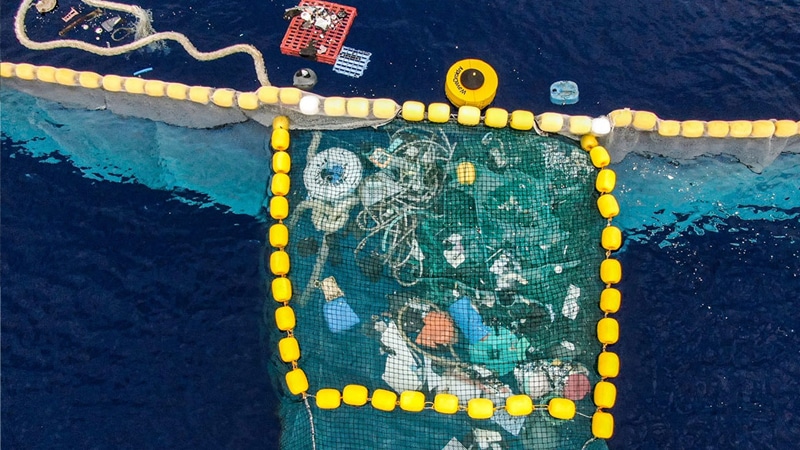
AI for Earth partners
Learn about our partners working on the front lines of sustainability.
The Ocean Cleanup
The Ocean Cleanup uses machine learning to identify plastic pollution in rivers and simulate how it moves in the ocean. These insights power passive cleanup systems to help remove plastic that impacts our ecosystems.
Learn about The Ocean Cleanup
Challenge
Nearly 9 million tons of plastic enter our oceans each year, mainly through rivers. This plastic collects in huge patches and slowly breaks down, impacting more than 600 marine species and introducing toxic pollutants into the food chain. Removing this plastic manually would be costly, time-consuming and lead to massive amounts of new carbon emissions. Passive cleanup systems backed by AI and machine learning can stop plastic from reaching the ocean – and remove the plastic that’s already there.
Solutions
The Ocean Cleanup uses two cleanup solutions – one for rivers and one for oceans – to remove tons of plastic from the world’s waterways. To locate plastic debris, The Ocean Cleanup uses bridge-mounted cameras to photograph floating objects and identify plastics. The Interceptor, an autonomous collection unit, is positioned to collect the plastic for removal. In the ocean, sensors attached to passive cleanup systems collect data on winds and currents. An algorithm runs simulations to show how these cleanup systems move through the ocean. The Ocean Cleanup plans to combine these two systems at scale to reduce ocean plastic by 90% by 2040.

Collaborating to rid plastic from rivers and the ocean
The Ocean Cleanup was using security cameras to spot debris, but identifying plastics manually was a labour-intensive process. By joining a Microsoft Hackathon for sustainability projects, they were able to build a solution that uses AI to identify and label tens of thousands of images, accelerating how they find and analyse pollution.

How river monitoring works
Cameras capture images of debris moving through a river toward the ocean. The images are analysed in Azure to differentiate plastic from organic debris. The Interceptor, a solar-powered extraction unit, removes plastic before it reaches the ocean. For plastics in the ocean, rotating currents collect plastic in massive patches. A passive cleanup system collects plastic for extraction.
How The Ocean Cleanup uses Azure for river monitoring
• Azure Machine Learning for training and deploying image recognition models.
• Azure Functions for conversion of ingested data.
• Azure Service Bus for coupling of microservices.
• Azure Storage for storing many types of critical data (e.g. metocean data, image data, data from test campaigns).
• Azure SQL as well as Azure PostgreSQL for storing processed data.
• Azure Kubernetes Service for scalable processing of remote data, computation of agricultural and economic models and other geospatial processing.
• GPU optimised Virtual Machines for training, evaluating and running plastic debris detection models.

Advanced technologies to rid the oceans of plastic

Photo credits:
All photos provided courtesy of The Ocean Cleanup. Bird surrounded by ocean plastic on the Northwestern Hawaiian Islands: Photo by Matthew Chauvin.



